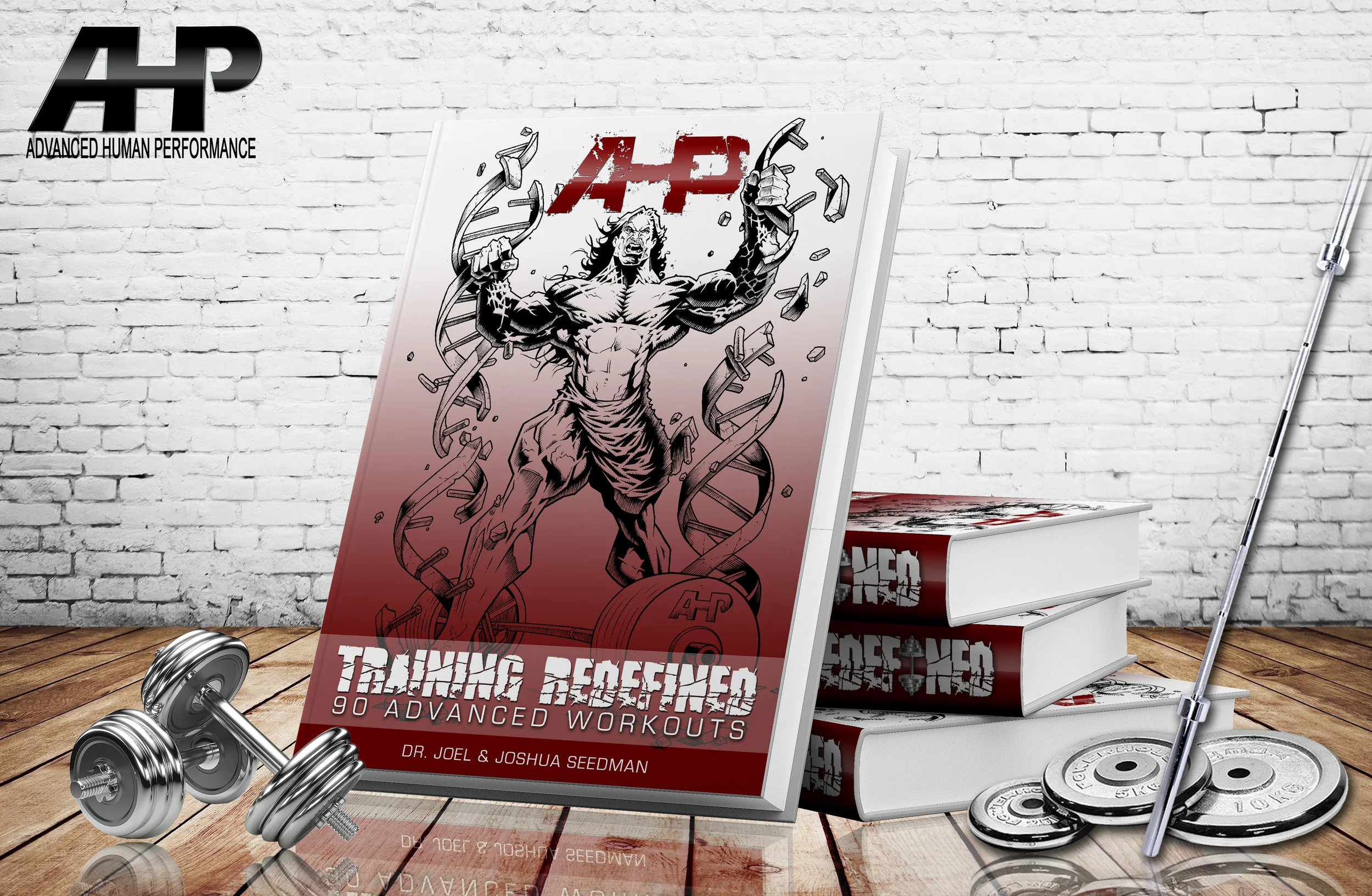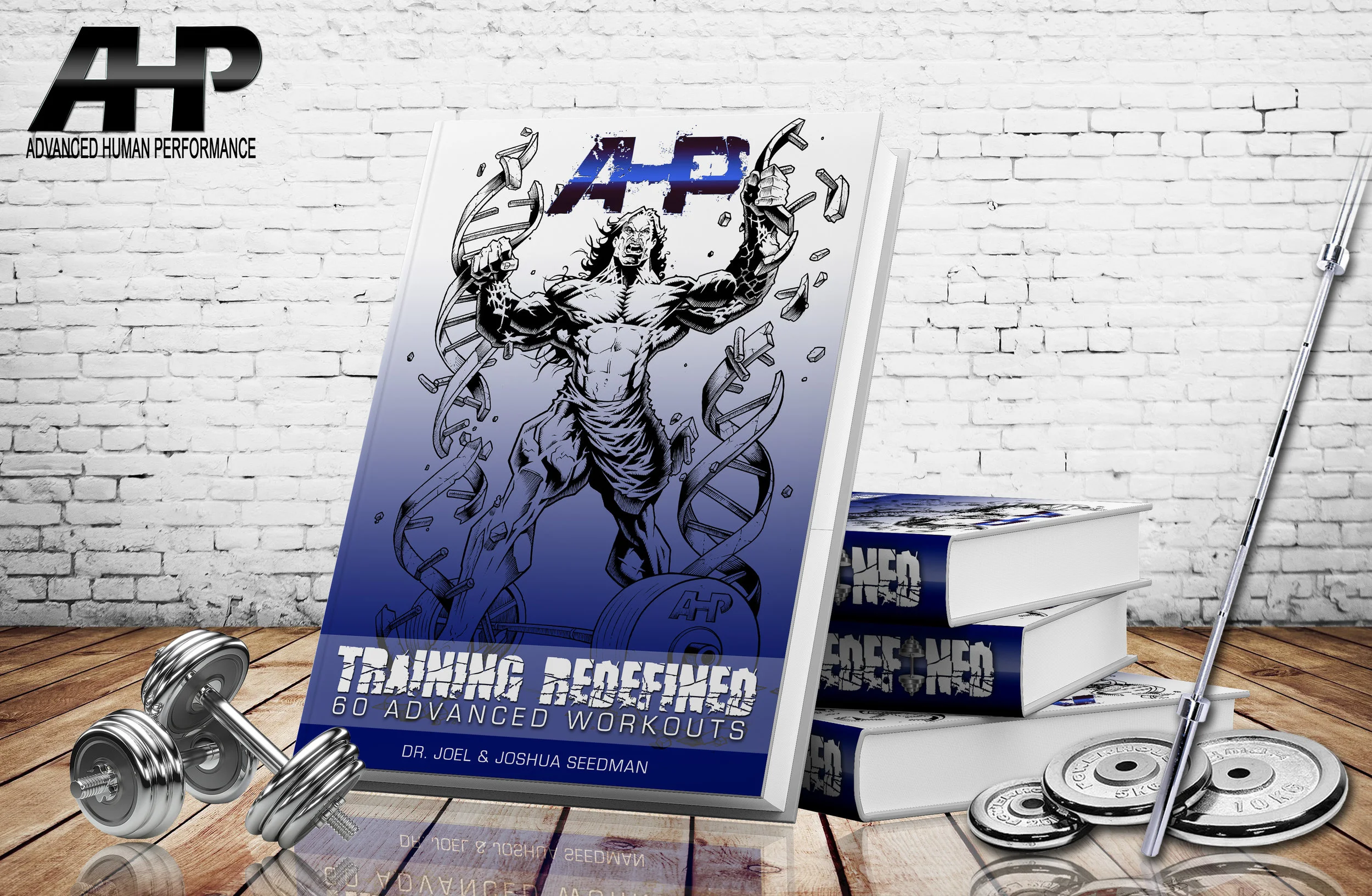Squat Form Solved
Dr. Joel Seedman, Ph.D.
From a visual perspective, the squat pattern is quite simple. However, neuromuscularly and biomechanically it’s actually very complex. As a result it requires a number of precisely executed components to lock the movement in. Some of these include the following:
-Set the hips back without bending over
-Spread the knees apart but not excessively
-Keep a neutral spine while maintaining a very slight natural curvature of the back
-Squat somewhere between 90 degrees and parallel (i.e. don’t collapse or go ATG)
-Pull yourself into the bottom position rather than allowing gravity to push you down
-Brace the core and tense your abs
-Keep the chest out without hyperextending the back
-Screw the feet into the floor by pushing slightly more to the outside of the feet
-Keep the feet relatively straight and aligned with the each other
-Pull the bar into your back by activating your lats
-Keep the head neutral (i.e. don’t look up but don’t let the head drop)
-Maintain maximal full body tension each and every rep
-Move in a perfectly vertical fashion without shifting horizontally
-Load each leg as symmetrically as possible without favoring one side
Bear in mind this list is not all-inclusive and only represents a small fraction of the important biomechanical and physiological components of a proper squat. With that said, dialing in your squat form should be straightforward right?
Yeah I thought so. In fact, trying to learn and apply each and everyone of these cues can feel beyond frustrating and quite frankly impossible even for seasoned iron game warriors let alone newbie lifters.
Furthermore every individual is different so the optimal set of cues will need to be precisely customized and frequently adjusted on a consistent basis. Anyways, you can see how mastering your squat can be a loosing battle from the get go (read more about mastering your squat here).
So how the heck does one actually learn to squat properly without going through an exhausting myriad of endless cues? Furthermore to what degree does one emphasize each cue since we never want to over cue someone to the point that they shift too extremely into the opposite direction (i.e. overspreading the hips or excessive hip hinge mechanics.). In other words how much do you emphasize each cue so that each of them is carried out to the proper degree?
The answer lies in simply performing precisely and methodically executed eccentric isometrics. Now I’m not talking about simply collapsing down into the bottom of a squat, then pausing for a few seconds while you mindlessly hang out on your tendons and ligaments. In fact, that’s a bastardized version of an eccentric isometric and will in no way do anything to improve your squat mechanics not to mention your strength or muscular development.
Instead I’m talking about performing the eccentric isometric with painstaking attention to sensory signals and proprioceptive feedback using Jedi-like focus and warrior-like intensity. In simple terms that means performing a slow and controlled eccentric while staying incredibly tight then pausing in the naturally stretched position while attending to as much somatosensory feedback as possible. Read more about eccentric isometrics here.
For additional movement mastery, perform them using a more extended eccentric isometric protocol. This is done by emphasizing the eccentric and extending the pause even longer in order to feel each and every physiological element and reinforce optimal positioning. Here’s what that looks like.
So why is this so effective?
In essence it’s because our bodies can provide all of the necessary feedback, coaching and cuing we need to optimize our movement. We simply have to know how to listen to the sensory feedback coming from our proprioceptive mechanisms (i.e. muscle spindles) and we’ll immediately begin to use the “sense of feel” to make subtle adjustments and fine-tune our movement. The best way to do this is through the use of properly executed eccentric isometrics.
This also means learning to sense where the natural stopping point and optimal range of motion is which happens to be somewhere between 90 degrees and parallel (read more about proper squat form here). And just in case you were wondering, no, your body is not an exception to the rule. A proper squat including optimal range of motion and ideal joint angles will look almost identical from human to human if it’s performed correctly regardless of differences in anthropometrics.
Now I know what you’re thinking, I’m not going deep enough and anyone can hold heavy weight in the position I’m demonstrating. In reality, pausing in the rock bottom position of an ATG squat takes significantly less effort than pausing at 90 degrees. That’s because the bottom of an ATG squat involves very little active tension and muscle activation since you’re simply collapsing in the bottom position and hanging out on your tendons, ligaments, and connective tissue. Simply put your muscles and your central nervous system are doing very little at that point to hold the position.
In fact it doesn’t take enormous levels of strength, muscle, and force production to hold this position (although coming back up from such as biomechanically compromised position does). Pausing at the 90-degree or parallel position on the other hand takes enormous levels of focus, strength, mental toughness, active muscle tension, concentration, motor control, proprioception, and intramuscular tension. Additionally it requires a highly calibrated central nervous system and precisely dialed in motor unit recruitment patterns not to mention rock solid biomechanics with optimized leverage.
As a result an extended eccentric isometric squat hold is also an excellent diagnostic tool for assessing your levels of neuromuscular efficiency. Simply put if you struggle to lock in and pause using relatively heavy weight with perfect form and rock solid stability then something is neuromuscularly and biomechanically amiss. Once you can hold 90% of your 1RM for a 10-s or longer extended eccentric isometric contraction using textbook form, you’ll know you’ve mastered your squat.
And just in case you were wondering, yes, these concepts and principles apply to every other movement pattern as well, not just squats.
For more on eccentric isometrics and how they optimize strength, performance, and overall physiological function check out my new ECCENTRIC ISOMETRIC Program here.


























































